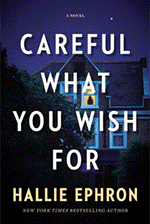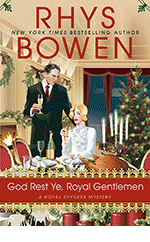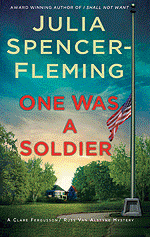JENN McKINLAY I married into my hair stylist. I know it sounds weird, but Ben the hair wizard started cutting the Hub's hair when Hub was eighteen. Hub is just shy of sixty now so that's a very long relationship between a man and his hair guy. When I married the Hub, Ben became my hair wizard, too. Naturally, when the Hooligans came along, they got their first haircuts with Ben and remained his clients until they moved away from home.
A few months ago, Ben told us he and his wife Barb, also a hair stylist, were retiring. We were thrilled for them but a bit bereft for us. We have known them for decades. We didn’t even have to explain the cut or in my case the color that we wanted, because they knew. Getting a haircut at Ben and Barb's was like visiting family. I even wrote them into one of my books WAIT FOR IT.
How about you, Reds, have you ever had to say good-bye to a professional that you've known forever -- hairdresser, mechanic, accountant -- an wondered, well, shoot, now what am I going to do?
LUCY BURDETTE: That’s a long hair relationship! I hate when that happens! Here’s the thing I dread the most: losing my dental hygienist. Trudy’s been taking care of my teeth since I moved to New Haven in 1984 and she does the best job. She’s a little older than me, so it wouldn’t be unreasonable for her to retire…but I beg her every time I see her and she assures me all is well. We know all about each other’s families, and we chat about books and Broadway shows, even though it’s not that easy to talk with your mouth full of equipment. She stops in at all my Connecticut booksignings. Oh Trudy, please don’t leave me!
HALLIE EPHRON: Recently my primary care physician retired. My first criteria, aside from competence, was AGE! I wanted someone much younger than me. My new PCP is just a few years out of medical school.
Youth was my #1 criteria when I had to be assigned a new editor at HarperCollins. (Sadly, publishing houses are known for laying off their oldest and most experienced editors.)
I also miss my mechanics – brothers (Brian and Greg) and before them their dad (Mr. Egan) who owned my local Sunoco station. I’d put them in one of my books and brought over a signed copy.
Marching into the future, kicking and screaming.
HANK PHILLIPPI RYAN: Oh, Jenn, this is SUCH a thing! First, my primary care physician retired, she was so great, and we had been together for gosh, so many years? I mean, I know I got older, but she was not allowed to. Think of the history. She’s seen me go from 36 to 76. I mean–that is a process!
The replacement is a version of how the original was, she’s fine. But it’s a different relationship. Although she probably knows newer things–I guess. What’s “standard” is certainly different, for better and for worse.
My dentist recently informed me he was retiring, too, SHEESH. And he is enthusiastic about the person who is taking over the practice. “You’ll love her,” he says. We shall see.
And yeah, even my dermatologist, who is famous and fabulous? Yup, gonzo in three months.
But if my hair guy retires, I’m just going to stay out of the public eye for the rest of my life. Clearly there is no other option.
RHYS BOWEN: I am still in recovery mode from my hairdresser going back to Thailand with no warning after twenty plus years. I’ve tried two people since. Both disappointing. I may have to fly to Thailand! And my doctor is getting on in years too. John’s is retiring at the end of the year and a new, young concierge is double the price. If my house cleaner stops working I’ll be in despair!
DEBORAH CROMBIE: Jenn, losing your hair person is the worst! Or quitting your hair person. I stopped going to my long-time stylist, who was also a friend, during covid, when she wouldn’t get vaccinated. And then, when I’d cut my own hair for a year (argh) it would have felt really weird to go back, as well as still unsafe. So I found a new stylist, who has since moved to another salon and I drive 30 minutes to get my hair cut!
But the worst is losing your primary care doctor. Ours, who had been our doctor for 18 years, moved to Missouri last year. He was also a neighbor, and he even made housecalls! We miss him so much. The new doctor is very nice but it takes years to build a relationship.
JULIA SPENCER-FLEMING: You may have noticed my hair is always up in a bun these days. I'm hoping it makes me look like a stern Latin professor at a women's college in Oxford, but I fear it really just reads "Granny who makes biscuits." The reason I haven't cut it is because during the pandemic my hairdresser, whom I had found after going from place to place for several years, left the state! The nerve of her, to go get married and move in with her new husband.
I've been waiting for the energy to find a new stylist, but honestly, I found the right place to get my Shih Tzus groomed, and that may be as far as it goes. (The groomer is only in his twenties; I'm hoping the dogs and I will all be in the ground before he retires.)
How about you, Readers? Have you lost any professionals in your life that you can't replace?




.jpg)





















